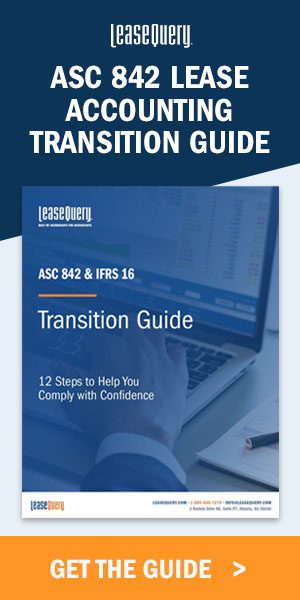This article, "Lease Accounting Changes: The Journey So Far," originally appeared on Protiviti.com.
Many public companies have spent the better part of the last two years reworking lease accounting practices to comply with a new accounting standard that went into effect for calendar-year reporting entities on January 1,, 2019. Private companies have been given an extra year to manage the transition and are expected to be compliant beginning January 1, 2021.
This is a complex and resource-intensive process requiring a deep dive into lease contract terms and conditions. The sheer volume of work can be overwhelming to a finance organization whose hands are already full with day-to-day activity. Fortunately, companies that are just embarking on this journey will not have to start figuring out the transition from scratch. The experience of those who have already completed the process can serve as a helpful guide.
The results of Protiviti’s 2019 Finance Priorities Survey indicate that only 17% of respondents have completed the transition, suggesting that many private organizations are going to need most of the next year to adapt to the new rule. Sooner is better than later, though, because the Financial Accounting Standards Board (FASB) is not expected to grant any additional deferrals beyond this one-year delay.
While CFOs will likely
own the responsibility of assessing the requirements of the new standard, collaboration
with operating partners and cross-functional change management activities are
critical to an effective and efficient lease accounting change initiative. This
is especially important when it comes to the allocation of resources,
establishing the transition framework and supporting appropriate training at
all levels of the organization.
Key Steps in the Lease
Accounting Transition
- Review/update lease inventory — All leases deployed across the organization must be
identified on a timely basis and aggregated to create a complete and accurate
lease inventory. When reviewing any lease, the following aspects of the lease
must be examined, in the proper order: Payment period and amount, life of the
asset, and the discount rate, which will drive initial asset value and
liability recognition and proper lease classification.
Read how one company used an innovative solution to collect and identify leases.
- Evaluate supporting systems — Review lease management systems to determine whether they are
compatible with the new standard, and whether additional controls may be required
to ensure that the inventory will remain current going forward. There are
technology solutions that can simplify the lease data gathering process,
automate classification and measurement of leases, and provide periodic journal
entries. Some technology options may also provide functionality such as
contract management with workflows, integration with other systems, and lease-related
disclosure reporting tools.
- Check for embedded leases — Any contract that includes the right to use an asset should be
assessed to determine whether the contract includes an embedded lease. Critical
data points in evaluating the contractual arrangement are: (i) is the asset
specifically identified, and (ii) does the lessee control the assets use?
- Review debt agreements — Because a new lease obligation many be considered new “debt,”
companies should ensure that the booking of the lease obligation doesn’t trip
any debt covenants.
- Check the pipeline — Understand whether any changes are expected to take place in the
business that will affect the nature of any current leases. Take time to
reconsider significant lease vs. buy decisions.
- Understand new disclosures — Company executives will want to understand the financial
reporting and expanded disclosures under the new standard especially as they
relate to subjective and judgmental determinations by management.
From our work with clients, we are well aware of the many questions companies have about the steps above, as well as lessons learned, helpful practical expedients, efficiency short-cuts and other intricacies surrounding the transition process. Protiviti will be conducting a free webinar on lease accounting readiness at 1 p.m. EDT, October 29, 2019, where we will be sharing some of these insights. Register here to join us and earn CPE credit.



